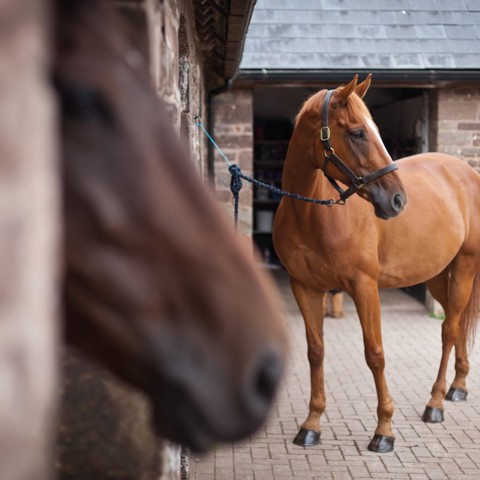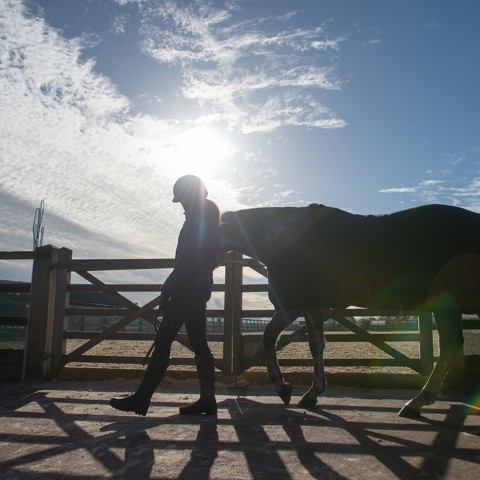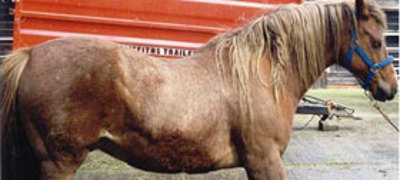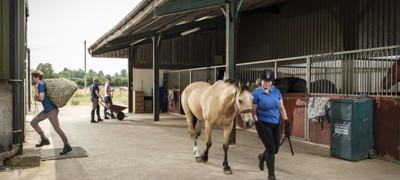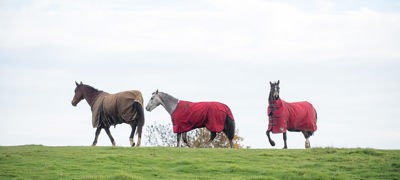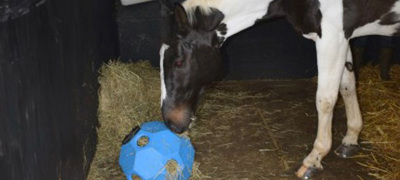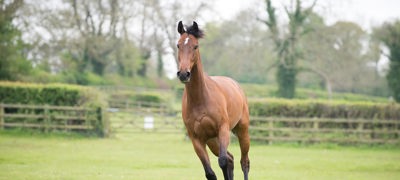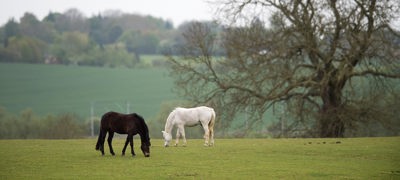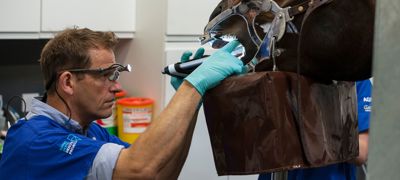Monitor weight
Monitor your horse’s weight closely and react to any changes. Use a weigh tape and get hands-on by fat scoring.
 play-circle
play-circle
Watch
Practical weight management for any horse
Restrict grazing
Grass is a major contributor of calories in a horse’s diet. Grazing can be restricted by using electric fencing to strip graze, setting up an alternative grazing system, or by using a grazing muzzle.
Rugging
Don’t keep an overweight horse unnecessarily rugged through winter as this time of year can be used to help the horse lose weight. Instead of unused calories being laid down as excess fat, the horse can use the calories to keep warm. Excess weight gain more than doubles the risk of laminitis1.
Learn how your horse naturally keeps warm and find information on to rug or not to rug.
Enrichment
Using enrichment helps to reduce the rate of consumption, while making feeding interesting. For example, consider using trickle feeders or hay balls. This will also provide some additional movement for the horse.
Know the signs
Watch out for any subtle signs of laminitis – the earlier an attack is noticed, the greater the chance of aiding recovery.
Exercise
Get your horse moving- if your horse is fit and healthy, create a diverse and regular exercise plan building up duration and intensity slowly. If your horse is recovering from laminitis, speak to your vet and farrier for advice on when and how to introduce exercise.
Feet
Pick feet out daily and check for any heat or a bounding digital pulse, being sure to call your vet if you have any concerns. Work with your farrier and keep up a regular trimming or shoeing routine to maintain the best shape possible. Leaving over 8 weeks between shoeing/trimming may contribute to laminitis2.
Diet
Weigh your horse’s forage! Your horse’s total daily food ration should be between 2-2.5% of their bodyweight. If weight loss is your aim this can be reduced to 1.5% (never below this figure, unless under vet supervision). For weight loss you may also consider feeding a mix of barley straw and hay (50:50)3. Make any changes to their diet gradually to help reduce the risk of colic and ensure your horse’s teeth are in good shape before introducing straw as it does take more chewing.
If your forage is purchased from a regular source, you may also find it beneficial to send a sample to a feed company to analyse the sugar and starch content.

